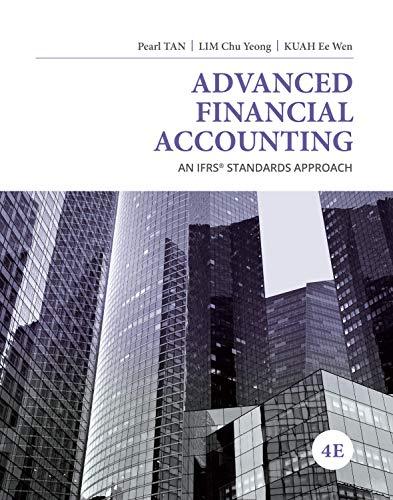Question
I: General Concepts and Initial Recognition Financial accounting and reporting ASAP 1. Which of these is not a major characteristic of a plant asset? a.
I: General Concepts and Initial Recognition
Financial accounting and reporting
ASAP
1. Which of these is not a major characteristic of a plant asset?
a. Possesses physical substance
b. Acquired for use in operations
c. Long-term in nature
d. All of these are major characteristics of a plant asset.
2. Which of the following is not a major characteristic of a plant asset? a. Possesses physical substance
b. Acquired for resale
c. Acquired for use
d. Long-term in nature
3. Cotton Hotel Corporation recently purchased Emporia Hotel and the land on which it is located with the plan to tear down the Emporia Hotel and build a new luxury hotel on the site. If the new hotel was constructed, the cost of demolition of the old Emporia hotel should:
a. capitalized as part of the cost of the land.
b. capitalized as part of the cost of the new hotel.
c. written off as loss in the year the hotel is torn down.
d. depreciated over the period from acquisition to the date the hotel is scheduled to be torn down. 4. The cost of land does not include
a. costs of improvements with limited lives.
b. costs of grading, filling, draining, and clearing.
c. special assessments.
d. costs of removing old buildings.
5. The cost of land typically includes the purchase price and all of the following costs except a. grading, filling, draining, and clearing costs.
b. street lights, sewers, and drainage systems cost.
c. private driveways and parking lots.
d. assumption of any liens or mortgages on the property.
6. If a corporation purchases a lot and building and subsequently tears down the building and uses the property as a parking lot, the proper accounting treatment of the cost of the building would depend on a. the significance of cost allocated to the building in relation to combined cost of the lot and building. b. the length of time for which the building was held prior to its demolition. c. the contemplated future use of the parking lot.
d. the intention of management for the property when the building was acquired. 7. Fences and parking lots are reported on the statement of financial position as a. current assets.
b. land improvements.
c. land.
d. equipment.
8. To be consistent with the historical cost principle, overhead costs incurred by an enterprise constructing its own building should be
a. allocated on the basis of lost production.
b. eliminated completely from the cost of the asset.
c. allocated on an opportunity cost basis.
d. allocated on a pro rata basis between the asset and normal operations. 9. Which of the following costs are capitalized for self-constructed assets? a. Materials and labor only
b. Labor and overhead only
c. Materials and overhead only
d. Materials, labor, and overhead
10. Which of the following assets do not qualify for capitalization of interest costs incurred during construction of the assets?
a. Assets under construction for a company's own use.
b. Assets intended for sale or lease that are produced as discrete projects. c. Assets financed through the issuance of long-term debt.
d. Assets not currently undergoing the activities necessary to prepare them for their intended use.
Step by Step Solution
There are 3 Steps involved in it
Step: 1

Get Instant Access to Expert-Tailored Solutions
See step-by-step solutions with expert insights and AI powered tools for academic success
Step: 2

Step: 3

Ace Your Homework with AI
Get the answers you need in no time with our AI-driven, step-by-step assistance
Get Started


